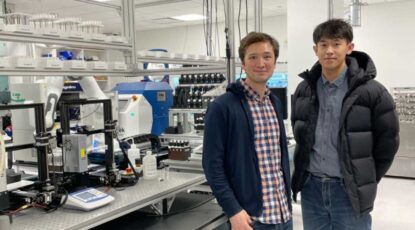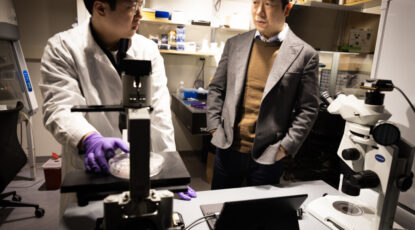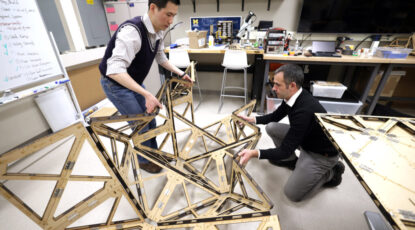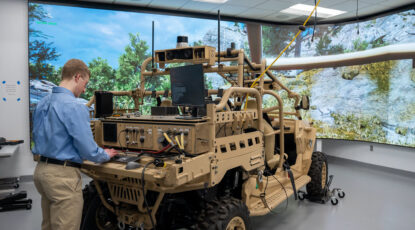Science and Technology
-
Better battery manufacturing: Robotic lab vets new reaction design strategy
New chemistries for batteries, semiconductors, and more could be easier to manufacture, thanks to a new approach to making chemically complex materials that researchers at U-M and Samsung’s Advanced Materials Lab have demonstrated.
-
First atlas of the human ovary with cell-level resolution is a step toward artificial ovary
Insights could lead to treatments restoring ovarian hormone production and the ability to have biologically related children, according to U-M engineers. Researchers could potentially create artificial ovaries using tissues that were stored and frozen before exposure to toxic medical treatments such as chemotherapy and radiation.
-
The most precise measurement of our expanding universe
With 5,000 tiny robots in a mountaintop telescope, researchers can look 11 billion years into the past. Now, using the largest 3D map of our cosmos ever constructed, the Dark Energy Spectroscopic Instrument reveals the most precise measurements to date of how fast the universe has expanded throughout its history.
-
U-M astronomers conduct first search for forming planets with new space telescope
Planets form in disks of dust and gas called protoplanetary disks that whirl around a central protostar during its final assembly. While such disks have been imaged, just two planets have been caught in the act of forming so far. Astronomers are now aiming the James Webb Space Telescope at protoplanetary disks to find clues about the ways in which planets form, and how they influence their natal disk.
-
Human stem cells coaxed to mimic the very early central nervous system
The first stem cell culture method that produces a full model of the early stages of the human central nervous system has been developed by a team of engineers and biologists at U-M, the Weizmann Institute of Science, and the University of Pennsylvania. The model, which resembles all three sections of the embryonic brain and spinal cord, could shed light on developmental brain diseases.
-
Bridge in a box: Unlocking origami’s power to produce load-bearing structures
For the first time, load-bearing structures like bridges and shelters can be made with origami modules — versatile components that can fold compactly and adapt into different shapes. It’s an advance that could enable communities to quickly rebuild facilities and systems damaged or destroyed during natural disasters, or allow for construction in places that were previously considered impractical, including outer space.
-
Futuristic technology reveals secrets in ancient Vesuvius Scrolls
When Italy’s Mount Vesuvius erupted in AD 79, it buried the palatial villa of Lucius Calpurnius Piso Caesoninus, Julius Caesar’s father-in-law. These black and brittle papyri may look like charred croissants, but U-M classicist Richard Janko believes they contain lost masterpieces of literature, history, and philosophy.
-
XR and U-M: Extended reality stage expands global education
Michigan explores the academic outer limits, introducing extended and virtual reality to the classroom. Its XR studio opens a new chapter on scalable, personalized, and immersive learning technologies. Oh, the places you’ll go!
-
Off-road autonomy: U-M’s Automotive Research Center funded with $100 million through 2028
The U.S. Army has extended its long-running relationship with the U-M Automotive Research Center, reaching a new five-year agreement of up to $100 million to boost work on autonomous vehicle technologies. As automakers explore self-driving cars, the Army-funded center will figure out how to take the tech off-road.










